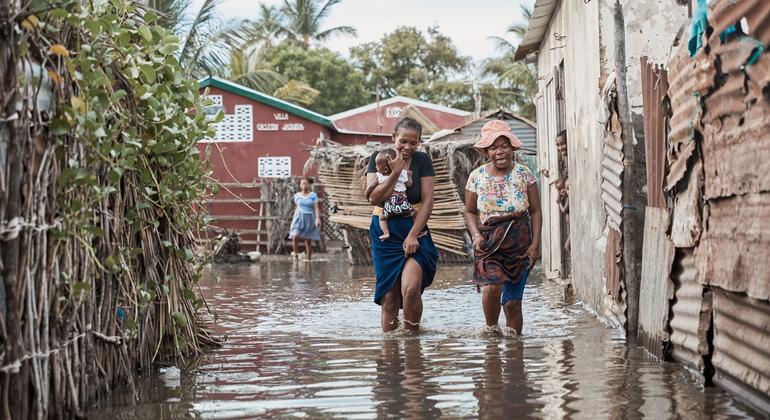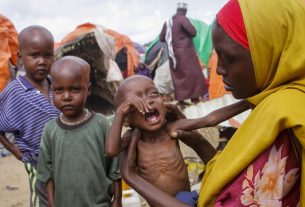UN Secretary-General António Guterres echoed that message, warning that record temperatures and extreme weather were “causing havoc” around the world.
The global response has fallen “far short”, Mr. Guterres insisted, just as latest UN data indicates that the Sustainable Development Goals (SDGs) are only 15 per cent on track at the midway point of the 2030 Agenda.
‘Supercharge progress’ on SDGs
According to WMO, current policies will lead to global warming of at least 2.8 degrees Celsius above pre-industrial levels over the course of this century – well above the Paris Agreement target of 1.5°C.
This year’s northern hemisphere summer has been the hottest on record, prompting the UN chief last week to reiterate his call for a “surge in action”.
In his foreword to the report, Mr. Guterres underscored that weather, climate, and water-related sciences can “supercharge progress on the SDGs across the board”.
Lives in the balance
The United in Science report, which combines expertise from 18 UN organizations and partners, shows how climate science and early warnings can save lives and livelihoods, advance food and water security, clean energy and better health.
After recent flooding in Libya that has claimed thousands of lives, WMO Secretary-General Petteri Taalas stressed that a lack of adequate forecasting capacity can have deadly consequences for a country when faced with extreme weather events.
He highlighted the risky situation developing in Sudan, where conflict has crippled the agency’s capacity to forecast hazards.
The head of the country’s met service told him that most of her staff members escaped Khartoum and were unable to “run their business in a normal way”, he said.
“They are not able to forecast this kind of high-impact weather events anymore,” he warned.
Extreme weather events are also a key factor in the spread of global hunger and the new report seeks to inform urgent action on this front as the UN estimates that nearly 670 million people may be food insecure in 2030.
The report’s authors explore the link between life-saving food production and nutrition, and investments in weather sciences and services which enable farmers to make decisions on crops and planting.
Early warnings are also crucial to “helping identify potential areas of crop failure that may lead to emergencies”.
Anticipate deadly outbreaks
“United in Science” includes analysis from the Intergovernmental Panel on Climate Change (IPCC), which warned that climate change and extreme events such as heatwaves are set to “significantly increase ill health and premature deaths”.
The report’s findings show that integrating epidemiology and climate information makes it possible to forecast and prepare for outbreaks of climate-sensitive diseases, such as malaria and dengue.
Limit losses from disasters
Early-warning systems can also help to reduce poverty by giving people the chance to anticipate and “limit the economic impact” of disasters.
The WMO-led report shows that between 1970 and 2021, there were nearly 12,000 reported disasters from weather, climate and water extremes, causing $4.3 trillion in economic losses – the majority of them in developing countries.
Every fraction matters
WMO deplored the fact that so far, there has been “very limited progress” in reducing the gap between promises that countries made to reduce greenhouse gas emissions and the level of emissions cuts really needed to achieve the temperature goal of the Paris Agreement.
To limit global warming to 1.5°C, global greenhouse gas emissions must be reduced by 45 per cent by 2030, with carbon dioxide (CO2) emissions falling close to net zero by 2050.
The report’s authors wrote that while some future changes in climate are unavoidable, “every fraction of a degree and ton of CO2 matters to limit global warming and achieve the SDGs”.
Early warnings for all
WMO has also underscored the importance of the UN’s “Early Warnings for All” initiative aiming to ensure that “everyone on Earth is protected from hazardous weather, water, or climate events through life-saving early warning systems by the end of 2027”.
Currently, only half of the countries worldwide report having adequate multi-hazard early warning systems.
The United in Science report was issued ahead of the SDG Summit and Climate Ambition Summit which take place at the UN General Assembly next week.
These meetings will “shine a spotlight on how to rescue the SDGs at the half-way mark to 2030” and “boost ambition to tackle the climate crisis”, the UN chief told reporters in New York on Wednesday.



